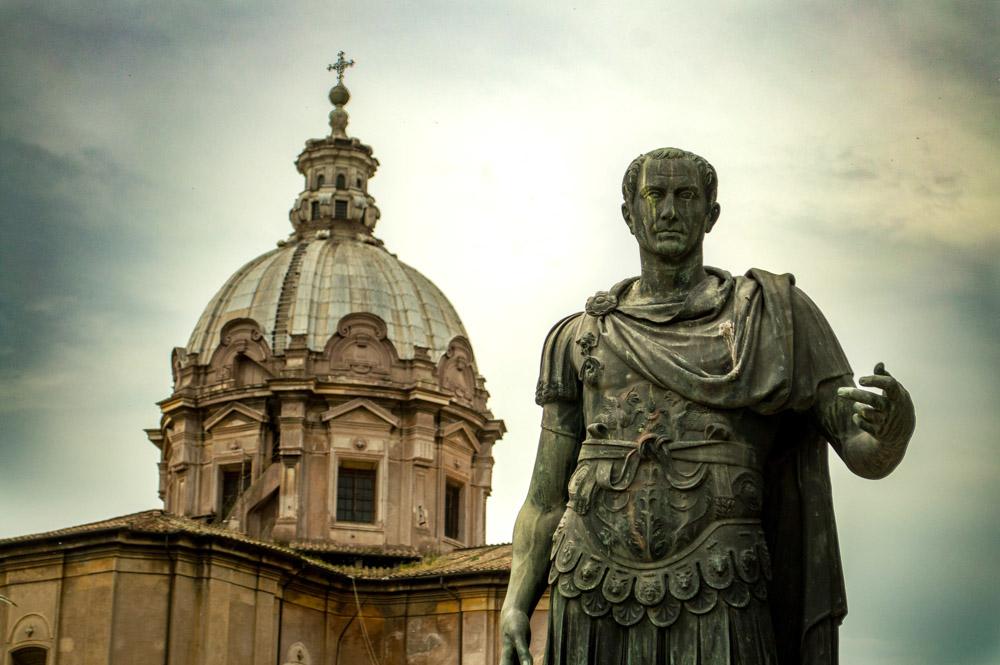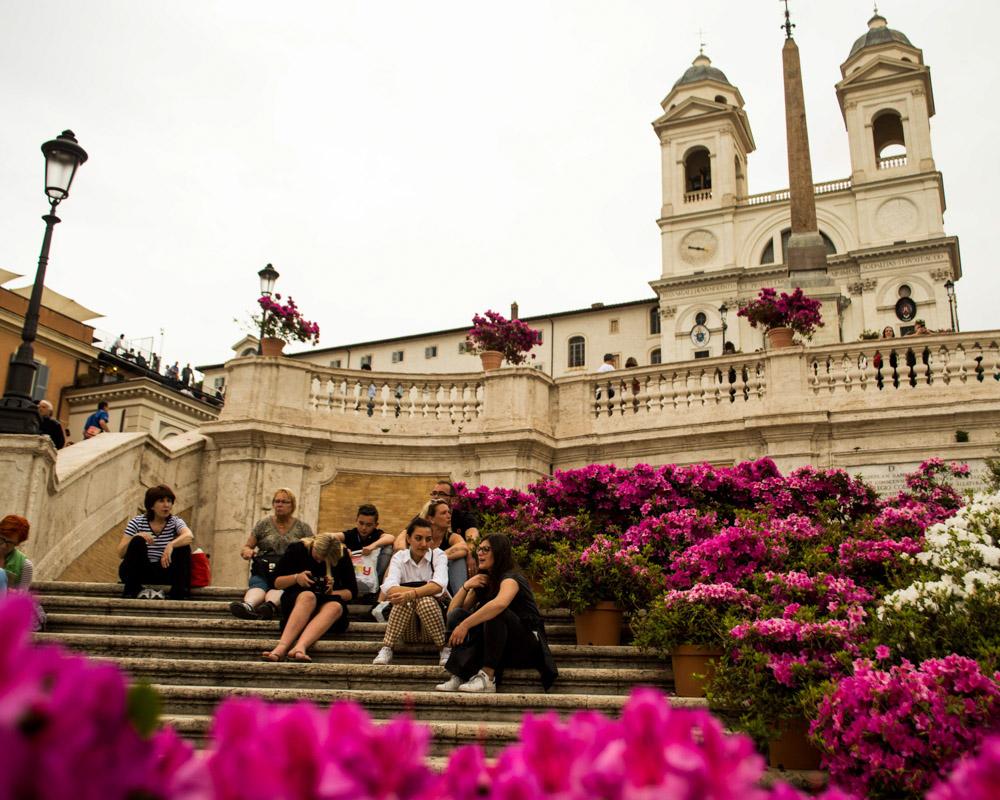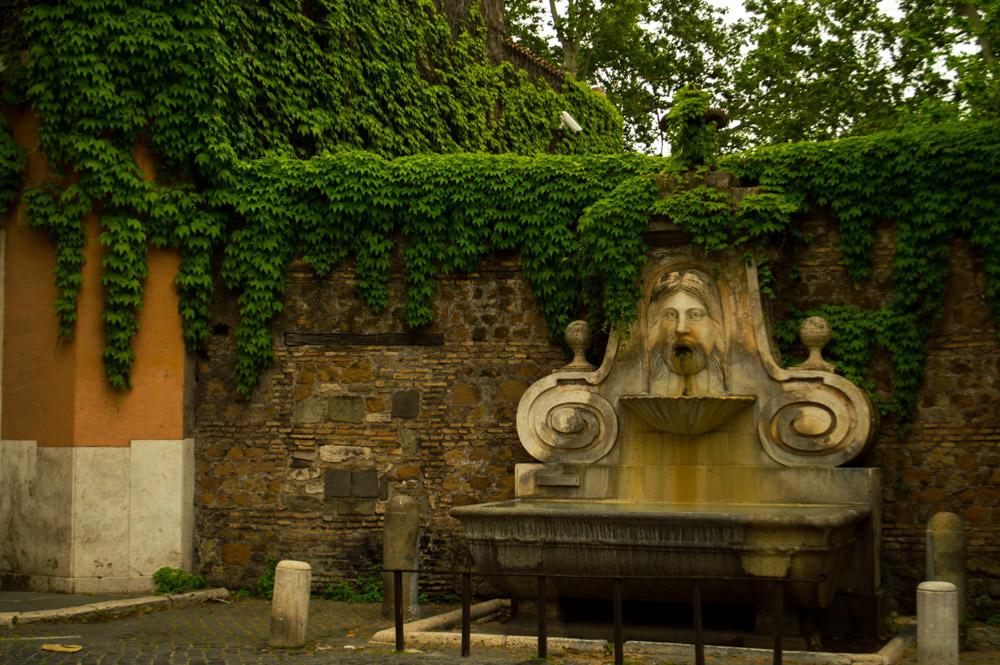Pantheon
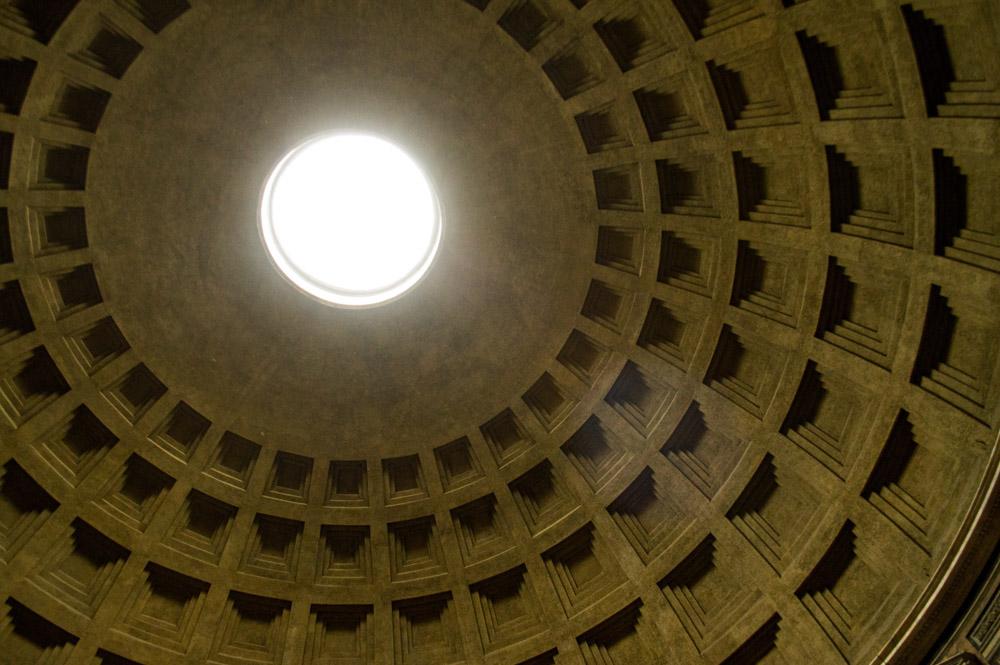
The Pantheon is a magical structure and to this day the largest concrete dome in the world. It’s rotunda converges on a perfect circle, called an oculus, open to the sky above. From there, a shaft of light, seemingly from Heaven itself, pierces the space and illuminates the exquisite marble adornments. When it rains—as it threatened to during our visit—the five drains which are arranged beneath the oculus catch the falling water before it can damage the interior.
The name “Pantheon” is derived from the Greek word Pantheion, meaning “[temple] of all the gods”. It was constructed originally by the Roman Consul Marcus Agrippa, perhaps as his private temple. It was not at that time dedicated to all the gods, though what purpose it served is not known today. It cannot exactly be said that this info was lost to history, either, as even Romans discussed the mystery a mere century after its construction. Cassius Dio, a Roman senator and author, wrote, “It has this name, perhaps because it received among the images which decorated it the statues of many gods, including Mars and Venus; but my own opinion of the name is that, because of its vaulted roof, it resembles the heavens.”
The structure burned down and faced several other disasters throughout its history, though it was always more or less restored to its original state. That was until the seventh century when it was repurposed by the Roman Catholics to become the Church of Saint Mary and the Martyrs.
The Pantheon is the burial place of several famous individuals, including two kings of Italy, the Queen Margarita and the Renaissance painter Raphael.
Fontana dei Quattro Fiumi
The dynamic poses of the figures upon the Fountain of the Four Rivers are absolute masterpieces, but they lose much of their drama (in exchange for a fair bit of humor) when the story of their connection to the building in the back is revealed.
The tale says that designer of the fountain, Gian Lorenzo Bernini, detested Borromini, the man who constructed the church before which his fountain stands. He expressed his distaste by having the marble figures cower as if the church were about to crush them, shield their eyes against the hideous appearance and so on.
Now, as much as I wish this story were true, it is actually just a popular tall-tale that local tour guides tell gullible tourists. While Berinini may very well have hated Borromini, the church was, in fact, constructed after the fountain had been completed, and the connections between the two are mere happenstance.
Bernini’s fountain does have deeper meaning, though. Each of the men represents a river from each of the continents were Papal authority had extended by the year 1651. The Ganges of Asia is depicted with an oar, representing the river’s use for commerce and transport. The river of Europe, the Danube, is depicted alongside the Pope’s personal coat of arms. The head of the figure which represents the Nile is covered with a piece of cloth, indicating the fact that at the time no one knew exactly where the Nile’s source was located. Finally, the Río de la Plata of Argentina and Uruguay lounges on a pile of coins, symbolizing the riches America offered to Europe.
The Trevi Fountain
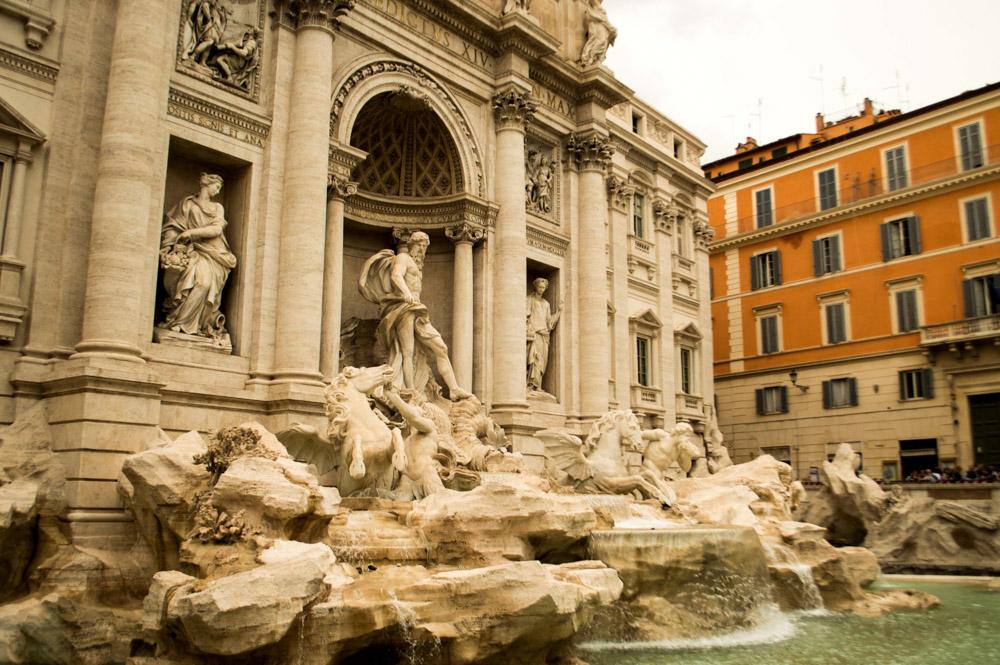
The beauty of the Trevi Fountain is absolutely undeniable. Those dynamic forms which stand amidst the intricate details of the marble work around them are stunning and could be observed for hours upon end without discovering all of their secrets. However, I found it impossible to get a good view of the monument for more than a few seconds. By the time I had located a decent vantage in the jostling and distracting crowd, I was too exhausted to think about the monument much. I snapped a few photos and then motioned my friends to follow me away from the chaos. We stopped in a fairly expensive gelateria and grabbed a few small cones, watching the crowds as they bustled about the scene as we ate.
I don’t recall seeing anyone partake in the renowned tradition of throwing a coin over their shoulder and into the waters of the fountain. I wondered if it had been banned by the City of Rome. Due to the number of people flooding around the fountain, I could understand why they might make such a rule. Without limits in place, there would be a constant stream of metal debris flying through the air, much of it likely missing its mark.
Rome is a city absolutely full of gorgeous monuments with complex histories. Every street and every square has seen one story or another unfold. Violence, rivalry, romance, it is all a part of the capital’s history and that is why Rome has the atmosphere that it does. Of all the cities I visited on Euro tour, Rome was the only one to meet the expectation of romance I placed upon it. Many of the others surprised me and I found new loves in how they differed from my preconceived notions, but there was something comforting in the fact that Rome was exactly what I thought it would be.
Signed,
Andrew
